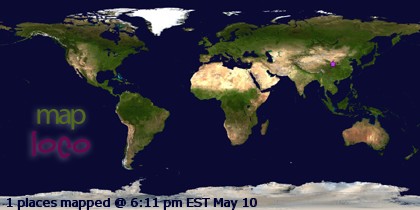Delhi:
*I stayed for my first few days in India with an old friend from primary school, Faith, who moved to Delhi permanently after falling in love with both the country and a co-worker in the course of an NGO service placement program. We spent these days getting a feel for the city, from Old Delhi, where the city's old Muslim still shows through, to the magnificent tomb complex of emperor Hanuman.
Looking out at Delhi from the main mosque
Scenes from Old Delhi
Humayun's tomb
Dehra Dun and the wedding
*Through the miracle of couchsurfing, I was invited to a traditional North Indian wedding in Dehra Dun, a small city northeast of Delhi. The bus ride there was an adventure in itself (more on Indian busses in a moment), but the wedding itself was, of course, the highlight. It is one of my great regrets that I was not able to participate in the first day of the wedding, which included henna painting ceremonies, song, and dance. But I was still able to complete my role as part of the groom´s party. At about 8 PM we gathered at a set point and our 50+ party snaked our way through the evening Dehra Dun streets. The whole party danced boisterously to the music of a hired brass band, illuminated by slanting light from 20 electric lamps whose trailing cords were plugged into batteries carried by yet others in the retinue.The groom's procession-- going to get the bride

Circling the fire 7 times (circa 4 AM)
Haridwar and Rishikesh
*Dehra Dun is a veritable hop (well, on Indian terms) from the twin sacred towns of Haridwar and Rishikesh, pilgramage sites along the Ganges River, so with some difficulty I boarded a bus to Haridwar. I wanted to see the Ganga Aarti ceremony, a nightly ritual where thousands gather on the banks of the river to chant together and bathe in the river. Haridwar was everything I expected a sacred town to be-- a riot of color, cows wandering the roads, orange-robed holy men camped on the sidewalks, bindied children selling flowers to float down the river.
I took a chairlift to a mountaintop shrine outside of town, but it was so mobbed that I only had time to admire the smoggy view of the river winding into the distance before I had to go back down to find a spot at the Aarti. In the press of people along the riverbank I was sure I would be pickpocketed, or at least lose my shoes (which were left in mountains outside in a designated area), but I was lucky. In fact, even when I was pulled forward by a scam artist looking to make me pay for a fake ritual I was able to use that opportunity to find a much better position from which to view the ritual, which was haunting and beautiful.
A temple in Haridwar
Washing in the Ganges
The Ganga Aarti
*My experience in Rishikesh was similar, although the few days I spent there turned out to be very frustrating and overwhelming in some ways. It was my goal to cross into Himachal Pradesh province to Manali. I had been told in Dehra Dun that I had to go to Haridwar to do this. In Haridwar I was told I had to go to Rishikesh. And then when I got there I was told I had to go back to Haridwar. Nevertheless, I was able to explore the enchanting streets and even to celebrate the river goddess Ganga´s birthday with an impromptu dip in the river, clothes and all. Hindu bathers around me nudged each other, cheering, and laughing good-naturedly. Sure, I had to wait a week to wash those clothes and wear them again, but the memory is priceless.
Rishikesh-Haridwar-Shimla-Manali
*What followed was one of the worst three day stretches of my entire trip. I was trying to get to Himachal Pradesh, and I had very little success. My nerves were already stretched thin from the exhausting ordeal that is traveling in India. India is (quite literally, I think) where the busses from the rest of the world come to die, and there is nary a shock absorber, functioning vent, or unbroken window among them. I spent 3 almost uninterrupted days on these overfilled busses, gritting my teeth over the bumps, elbow to elbow with 8 other people in a seat made for 4, with the dusty 100 degree wind dehydrating me. Ten hours later, exhausted and near tears, I would get to my next destination and be told that I could not get from there to Manali, despite the information I had been given at the chaotic, overwhelming bus stand that morning. I would try desperately to find a place to stay for the night and try again the next day, when I would again be given misinformation but the single English speaker at the bus stand, only to end up in another Wrong Place that night.
By the time I ended up in Shimla, a place I had never intended to go to, I was desperate-- and then the bus was late and the hotel owner chastised me for my tardiness and told me he had given away my room. I was lucky enough to meet Bala, an Indian-born Canadian, at this point. He shared his hotel room and his dinner with me and helped me to find a bus (semi-deluxe, even) to Manali the next night. Sure, the so-called semi deluxe bus had broken windows and lacked shock absorbers just like its brethren, but I had my own seat in which to drowse, and when I arrived in Manali I was finished with long, hot, torturous bus rides in India. Train rides, well, that was another story.
Really the only good part of Shimla-- sunset over the mountains



































